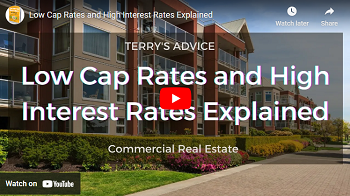CAP Rates for Apartment/Multifamily Properties in Phoenix Arizona
Multifamily / Apartment Cap Rates
Rates as of: 12/13/2025
| Luxury Metro A Class | 5.18 |
| Luxury Metro B Class | 5.21 |
| Luxury Metro C Class | 5.80 |
| Suburban A Class | 5.25 |
| Suburban B Class | 5.38 |
| Suburban C Class | 5.75 |
| Value Added Acquisition | 6.77 |
November 2025 Multifamily Cap Rate Report
Updated November 21, 2025
Multifamily Cap Rates Slightly Compressed in Q3 2025
According to Freddie Mac, Multifamily Cap rates compressed slightly in the third quarter of 2025 with an average of 4 basis points (BPS). CBRE is reporting the majority of the compression occurred in C Class properties with a 5 bps decrease and Value Add properties an 8% decrease. Most of this compression occurred in C class and value add properties. A class property hit with rental concessions has seen net operating income dropping resulting in the lowest cap rate compression of 2% along with the lowest rent increases.
Buyer Sentiment has Improved
Buyer sentiment has improved during Q3 as the slight reduction in long term interest rates has made borrowing more favorable. Underwriting metrics have improved and are considered by most lenders to be stable, according to Fannie Mae. Furthermore, more investors, especially institutional investors, have abundant funds to invest and are becoming more friendly with today’s continued high property prices that produce low ROIs. Multifamily Investment volume is predicted to continue to improve through early 2026 even though the majority of investors are still reluctant to sell.
Rent Growth Slow
Fannie Mae is reporting rent growth slightly better at 2.8% on core properties compared to 2.4% during the second quarter of 2025. Rents on A Class properties have remained flat, B properties have had an 1.7% increase, C class a 3.4% increase and Value Add a 5.38% increase.
Why You Should Invest with a Long-Term Hold Strategy Today
Investing with a long-term hold strategy seems prudent today. With an abundance of new units entering the market, rental increases being on the flat side, and vacancy, concessions and expenses on the rise, it is not likely that net operating incomes will improve much through 2026. With IRR targets remaining at 7.70%, Cash on Cash returns at 4.8% and property values on the high side, it will take time to realize a decent return on your investment.
To be more specific, don’t plan on raising rents much in the near future unless you can land a property with considerably under market rents. Expect inflation to continue to increase on property expenses. This all adds up to considering a 6-year hold where a higher ROI can be realized in the future.
CLOSING 97% OF OUR MULTIFAMILY LOANS AS PROPOSED
Getting the right loan and the lowest rate requires wisdom and finesse. If you’re ready to partner with a team of professionals who’ve built a foundation on straight talk and true strategy, we are the loan store for you.
28+ YEARS OF OVER-DELIVERING VALUE.
HUD Loans are one of the best options with the current level of interest rates. For a complete guide to HUD Multifamily Loans please go here:

